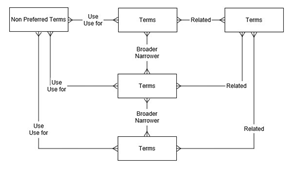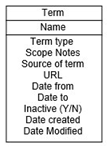Why you need to know about Entities
For information management (IM) professionals, entity relationship modelling has become a necessary skill set.
Until recently the enterprise eCM systems we worked with presented a ‘standardised’ information architecture with file plans for classification and retention schedules for sentencing. This model changed with the rise of SharePoint and the adoption of in-place records management in business systems.
Our current challenge is to build information governance tools – classification schemes, retention schedules etc. – which fit into a variety of information architectures. And this is where entity relationship modelling is useful.
An entity relationship model (or diagram) is a conceptual data model that represents structured data in terms of entities, attributes and relationships.
In brief:
An entity is something that exists in itself, actually or hypothetically and can be uniquely identified. Entities can be thought of as nouns. Common entities in IM are terms, document types, contacts, organizations, repositories, systems. Attributes are characteristics or particular properties that describes the entity, also known as the metadata describing the entity.
Attributes can be many and varied and include names, dates, descriptions, etc. Relationships are the interactions between the entities.
Relationships can be thought of as verbs, linking two or more entities. Common relationships in IM are broader than, narrower than, use, use for.
Cardinality defines the relationship between the entities in terms of numbers. The main cardinal relationships are: one-to-one, one-to-many, and many-to-many.
The entity-relationship diagram (ERD) is used to represent information objects and their relationships visually.
Notation provides the means to represent these building blocks are represented in a standardise format. In Crow’s Foot notation entities are presented as boxes, and relationships as lines between the boxes. Cardinality is represented by different ends to each line.
So a Thesaurus is represented like this:

And the Term entity can be represented like this:

Simple isn’t it. There is, of course, an entire branch of information science devoted to database design and entity relationship modelling.
My point is that models and diagrams are important tools as they are easy to understand and help bridge the gap between management, information managers and system/database developers.
There are a bunch of tools available to assist with building entity relationship diagrams. After playing with many, I have settled on Gliffy – an online business graphics application.
Conni Christensen founded Synercon in 1998 and is the designer of a.k.a. information governance software. She has more than twenty years’ experience in records and information management, business consulting, training and software development. http://www.synercon.co/
